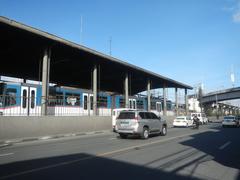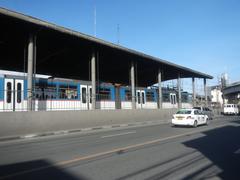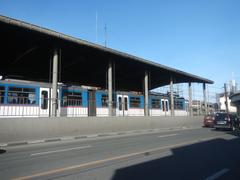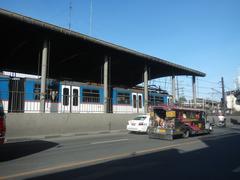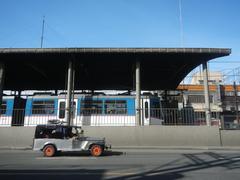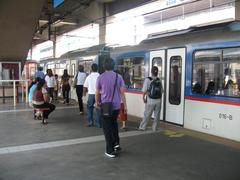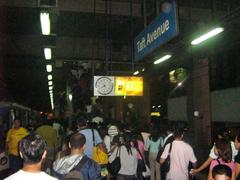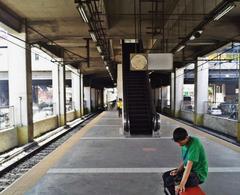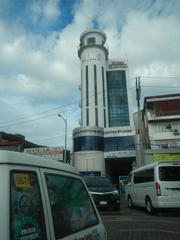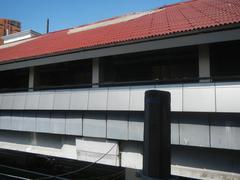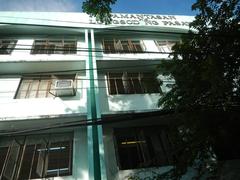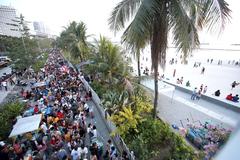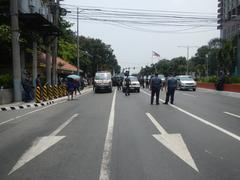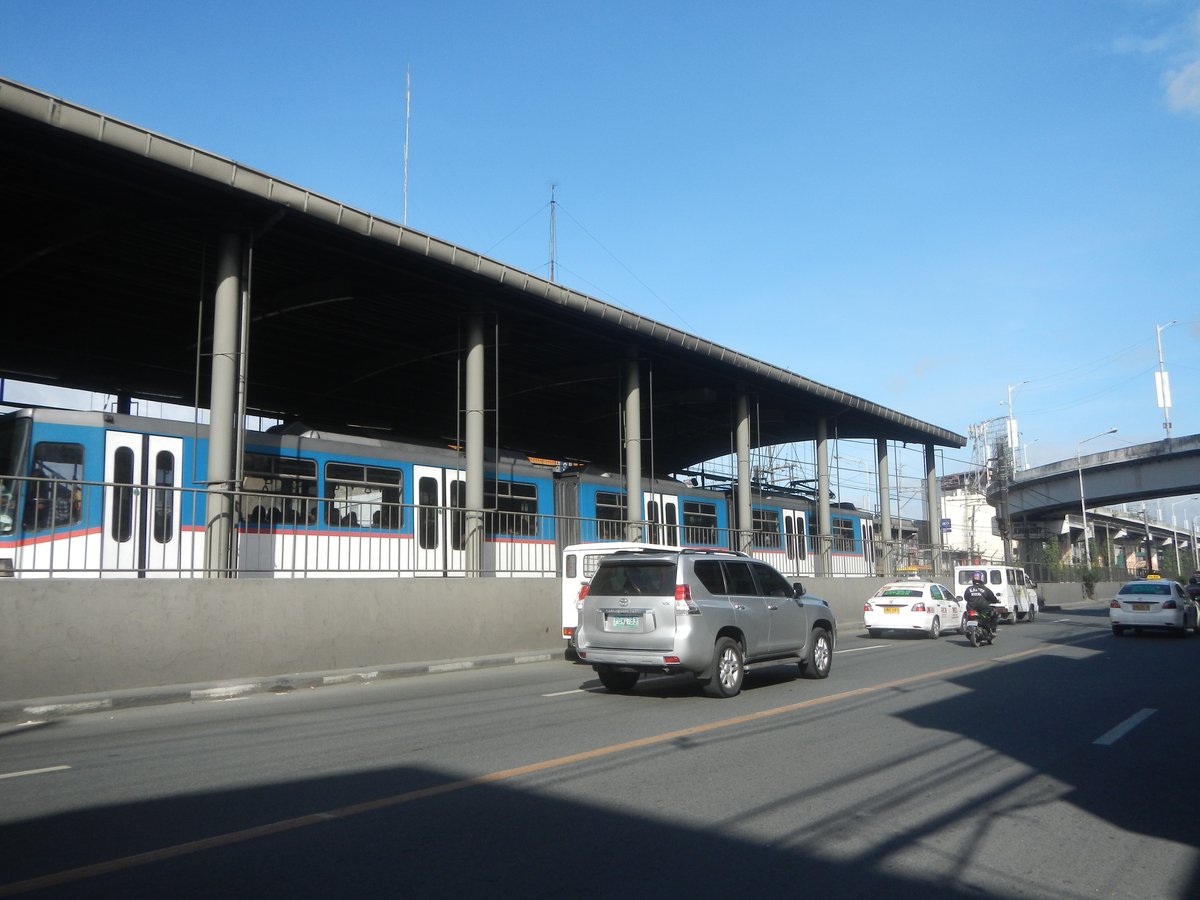
Taft Avenue Station: Visiting Hours, Tickets, and Travel Guide to Pasay Historical Sites
Date: 15/06/2025
Introduction to Taft Avenue Station, Pasay: Significance and Overview
Taft Avenue Station is a cornerstone of Metro Manila’s mass transit system, serving as the southern terminus of the Metro Rail Transit Line 3 (MRT-3) and a vital intermodal hub in Pasay City. Since its opening in 1999, the station has transformed from a solution to traffic congestion into a catalyst for economic growth, urban integration, and cultural connectivity. Strategically positioned at the intersection of EDSA and Taft Avenue—commonly known as Pasay Rotonda or EDSA-Taft—the station is directly linked to key transportation systems, including the LRT-1, provincial and city bus terminals, and adjacent commercial centers such as Metro Point Mall.
With accessible facilities, multiple ticketing options (including the Beep card), and connections to major destinations like SM Mall of Asia, Cultural Center of the Philippines, and Ninoy Aquino International Airport, Taft Avenue Station is more than a commuter stop—it’s an urban gateway. This comprehensive guide details the station’s history, visiting hours, ticketing, accessibility, nearby attractions, and practical travel tips, ensuring a seamless experience for commuters, tourists, and urban explorers alike.
For up-to-date information, consult the Metro Rail Transit Line 3 Website, Beep Card Information, or use transit apps like Audiala (Philippine Railway Fandom; Wikipedia).
Contents Overview
- Introduction
- Early Planning and Vision
- Contractual Foundations and Delays
- Construction Controversies and Urban Impact
- Urban Development and Economic Transformation
- Integration with Metro Manila’s Transport Network
- Architectural and Operational Features
- Taft Avenue: Historical and Urban Context
- Visitor Information: Hours, Tickets, and Accessibility
- Socio-Economic Impact and Ongoing Development
- Legacy and Continuing Relevance
- Frequently Asked Questions (FAQ)
- Conclusion and Call to Action
1. Early Planning and Vision for Metro Manila Transit
The roots of Taft Avenue Station trace back to the 1970s, when the Overseas Technical Cooperation Agency (OTCA) proposed a network of five subway lines to tackle Metro Manila’s worsening traffic. The Urban Transport Study in the Manila Metropolitan Area (1973) identified a 24.3-kilometer corridor along EDSA for what would become MRT-3 (Philippine Railway Fandom). JICA’s 1976 study further recommended heavy rail for higher capacity. However, rapid urban growth and increasing congestion meant it would take nearly two decades for the project to break ground.
2. Contractual Foundations and Delays
The MRT-3 project’s formalization began in the early 1990s with a Build-Lease-Transfer (BLT) Agreement between the Department of Transportation and Communications (DOTC) and EDSA LRT Corporation. The project was split into two phases, with the first stretching from North Avenue (Quezon City) to Taft Avenue (Pasay) (Philippine Railway Fandom). Despite Cabinet approval in 1993, legal disputes delayed construction until the Supreme Court upheld the contract in 1995 (Wikipedia). Groundbreaking began in 1996 under the Metro Rail Transit Corporation (MRTC).
3. Construction Controversies and Urban Impact
Unlike most of the elevated MRT-3, the Taft Avenue segment was built at-grade due to existing air rights allocated for the Tramo flyover (Wikipedia). This at-grade design led to road closures and detours, prompting local opposition and legal threats from Pasay officials. Despite disruptions, construction continued, and the station was completed as the line’s southern terminus.
4. Urban Development and Economic Transformation
Since opening, Taft Avenue Station has sparked significant urban growth. The influx of commuters attracted hotels, restaurants, and retail establishments, transforming the area into a commercial hotspot (Wikipedia). Its strategic location—serving both Metro Manila and provincial travelers—has solidified its role as a transportation and economic hub.
5. Integration with Metro Manila’s Transport Network
Taft Avenue Station is directly connected via elevated walkway to the LRT-1 EDSA Station, enabling seamless transfers between lines (Philippine Railway Fandom; NewsToGov). Adjacent bus terminals serve provincial and city routes, while jeepneys and the EDSA Carousel bus system further enhance connectivity (Wikipedia).
6. Architectural and Operational Features
Unique in its at-grade construction, Taft Avenue Station allows easy pedestrian access and integration with Metro Point Mall. Its design enables passengers to switch directions without paying a new fare, though crowd control measures may limit this (Wikipedia). The concourse-above-platform layout is shared with few stations on the line.
7. Taft Avenue: Historical and Urban Context
Taft Avenue, named after William Howard Taft, is a major urban artery traversing Manila, Pasay, and Parañaque (Trek Zone). The area around the station boasts landmarks such as SM Mall of Asia, Department of Foreign Affairs, and easy access to Ninoy Aquino International Airport (NewsToGov). Cultural sites like Intramuros and Rizal Park are also within reach via rail connections.
8. Visitor Information: Hours, Tickets, and Accessibility
- Visiting Hours: 4:30 AM – 10:00 PM daily (MRT-3); LRT-1 services may extend slightly later. Schedules may vary on holidays—check official MRT-3 or LRT-1 sites for updates.
- Ticketing: Purchase single-journey tickets or use a Beep card for faster access and transfers. Fares typically range from PHP 15–30.
- Accessibility: Elevators, ramps, and tactile paving support passengers with disabilities. Transfers to LRT-1 are via an accessible elevated walkway.
- Station Facilities: Restrooms, security, convenience stores, and food outlets are available. Customer service booths provide assistance.
- Travel Tips: Avoid rush hours (7–9 AM, 5–7 PM) for a smoother experience. The elevated walkway offers panoramic city views.
9. Socio-Economic Impact and Ongoing Development
Taft Avenue Station’s role goes beyond transportation. It has eased EDSA congestion, spurred commercial activity, and serves as a model for transit-oriented development (Wikipedia). Ongoing modernization of Metro Manila’s rail network, including the Mass Transit Modernization Program, promises further capacity and efficiency improvements (Secret PH).
10. Legacy and Continuing Relevance
Taft Avenue Station embodies Metro Manila’s commitment to integrated, accessible transit. Its history reflects the challenges and triumphs of urban planning in a rapidly evolving metropolis, while its ongoing modernization secures its relevance for future generations (Wikipedia; Philippine Railway Fandom).
11. Frequently Asked Questions (FAQ)
Q: What are Taft Avenue Station’s visiting hours?
A: 4:30 AM to 10:00 PM daily for MRT-3; LRT-1 services may extend to 10:15 PM.
Q: How do I buy tickets?
A: Tickets are available at booths or via Beep card for convenience and discounts.
Q: Is the station wheelchair accessible?
A: Yes, with elevators, ramps, and tactile paving.
Q: Can I transfer to LRT-1 from Taft Avenue Station?
A: Yes, via a direct elevated walkway.
Q: Are guided tours offered?
A: No official tours, but staff provide travel assistance.
12. Conclusion and Call to Action
Taft Avenue Station stands as a testament to Metro Manila’s drive for modernization, connectivity, and inclusivity. Its integration with major transit lines, accessibility features, and vibrant surroundings make it essential for daily commuters and travelers alike. For a seamless journey, consult the MRT-3 and LRT-1 websites, or use the Audiala app for real-time updates. Explore the cultural and commercial riches around Pasay, and share your experiences to help others discover this vital urban hub.
Useful Links
- Official Metro Rail Transit Line 3 Website
- LRT-1 Website
- Beep Card Information
- Metro Manila Transit Updates
- Philippine Railway Fandom: MRT-3
- Wikipedia: Taft Avenue Station
- NewsToGov: MRT Stations
- Secret PH: Philippine Transportation Overview
- Trek Zone: Taft Avenue
For images and maps of Taft Avenue Station, including the elevated walkway and nearby attractions, consult official transit resources or popular navigation apps.
